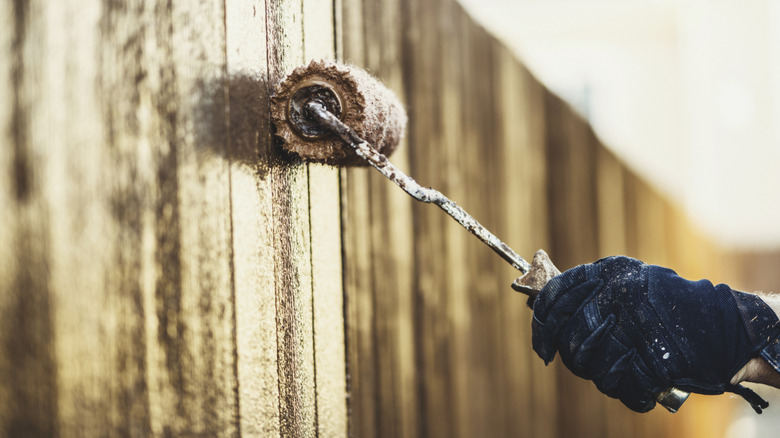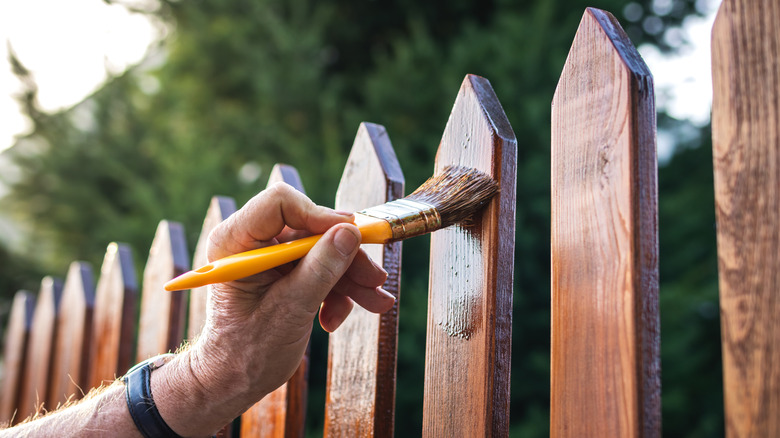Fence Staining Mistakes Everyone Makes (& How To Avoid Them)
Staining your wood fence may seem easy, but there are many helpful tips savvy DIYers will want to know before using wood stain. If you've ever found yourself standing in front of your fence, brush in hand, only to be disappointed by the final result, you're not alone. Many people make simple mistakes when staining their fences that can lead to a less-than-perfect finish. Some of these mistakes include choosing the wrong stain, staining in direct sunlight, and skipping the sanding between coats.
Most people make the mistake of picking a stain that doesn't suit their fence's needs. Not all stains are created equal, and what works for one type of wood might not be ideal for another. Some stains are best for softer woods, while others are for denser, harder woods. There are also oil- and water-based stains, each with pros and cons. Picking the wrong product can lead to uneven coverage, peeling, or fading too soon.
To avoid this, start by knowing what wood your fence is made from. Once you know that, choose a stain that is compatible with it. If you're unsure, ask an expert at your local hardware store. Also, remember that oil-based stains often penetrate the wood better and provide long-lasting protection, while water-based stains are easier to clean up and dry faster. When picking a stain, it's also a good idea to consider your fence's exposure to sunlight, rain, and snow. A UV-resistant stain works best for fences in sunny areas, while a water-repellent stain can help prevent moisture damage if your fence is exposed to lots of rain.
Staining in direct sunlight
It's a sunny day, the birds are singing, and you're ready to stain your fence. But hold up! Staining your fence in direct sunlight is another big mistake. While it's tempting to do the job when the weather is perfect, the sun can dry the stain too quickly and cause it to not soak into the wood properly. This means the finish could look uneven, or worse, you'll end up with streaks and blotches that make your fence look like a patchwork quilt.
To avoid this, always try to stain your wood fence in the early morning or late afternoon when the sun isn't beating down directly. This gives the stain enough time to penetrate the wood and create an even coat. Plus, if you're lucky enough to live in a place where it's sunny most of the time, you'll want to take advantage of cooler parts of the day when the wood is more receptive to stain.
It's not just about the time of day — you need to pay attention to the weather, too. Your stain might not set properly if it's too hot, too cold, or even too humid. For best results, aim to stain on a dry, mild day. A temperature between 50°F and 80°F is ideal. This ensures the wood will absorb the stain evenly and that the finish will dry without issues. If you stain your fence during a heatwave, your fence might dry too fast, leading to that dreaded patchiness. On the other hand, if it is too cold or damp, the stain may take forever to soak in or not set properly.
Skipping sanding between coats
Sanding between coats is an extra step, and while it may be tedious, it's worth it. Sanding creates a smoother surface for the next layer of stain to adhere to, which helps prevent peeling and ensures that the finish lasts longer. Also, sanding helps remove any dust or debris that might have settled on your surface, giving you a clean canvas for your next coat. If you skip this step, you might have a rough or uneven texture that doesn't look as nice as you'd like. It's easy to get impatient and skip this part, but it pays off.
To avoid this, after your first coat has dried completely, grab some fine-grit sandpaper (around 220 grit) and give the surface a light sanding. This will help smooth out any bumps and rough spots and create a better surface for the next coat. It doesn't need to be a major sanding session — just a light pass over the surface should do. Once you're done, wipe down the fence with a clean cloth to remove any dust before applying your next coat.


